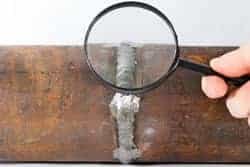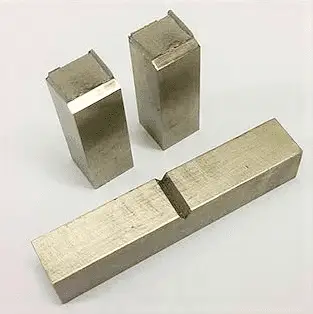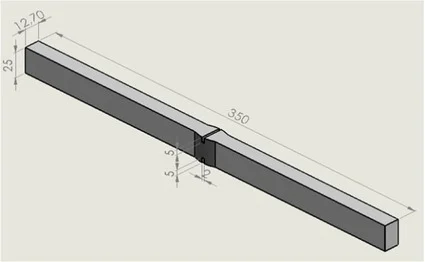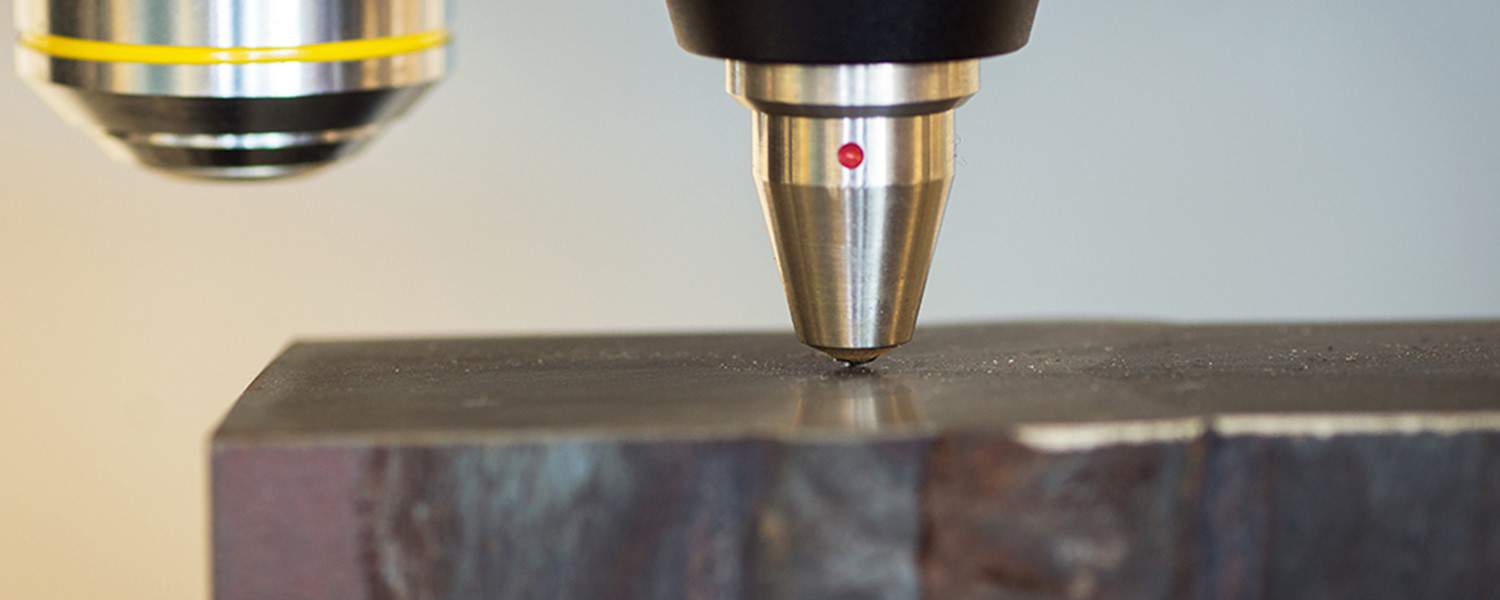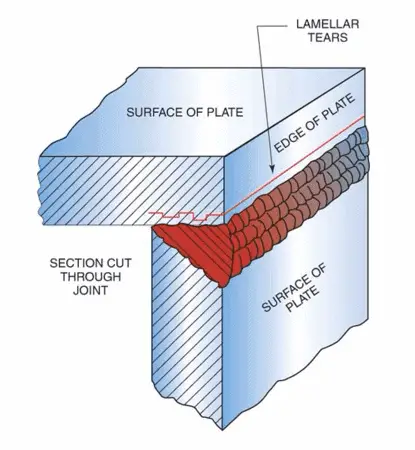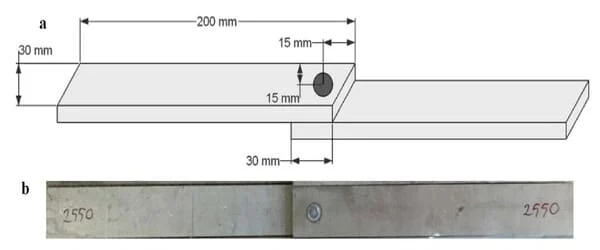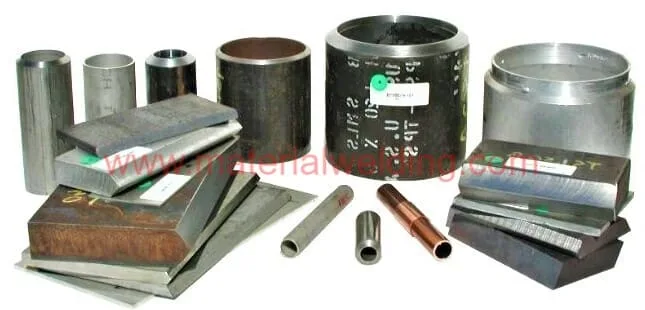What is the Crack Tip Opening Displacement (CTOD) Test?
Crack tip opening displacement test or CTOD Test is used to find out the fracture toughness of a metals with an artificial (a notch) created crack, & a method to decide CTOD to induce unstable fracture.
This test is executed by applying load on a CTOD test coupon using 3-point loading arrangement as illustrated in the below figure 1. For the test, specially cut test coupons of complete plate thickness are prepared & notch is made by machining. This notch is further propagated by load during the test.
Some of the most accepted methods of measuring toughness include the Charpy V notch test (CVN), crack tip opening displacement (CTOD), J-integral, and lately crack tip opening angle (CTOA).
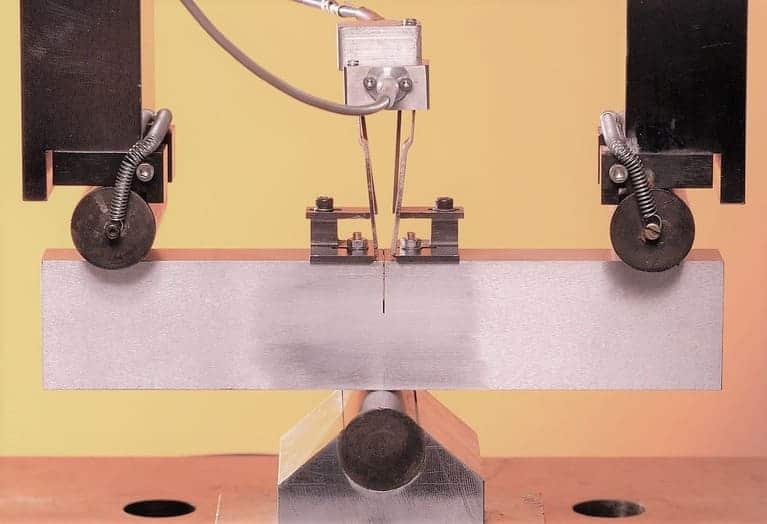
During the CTOD test, a fatigue crack is propagated along with the test samples up to mid-thickness, where the notch is placed.
Crack Tip Opening Displacement: CTOD Test standards
- BS 7448 (Part 1-4), ISO 15653, ISO 12135, ASTM E 1820.
Crack Tip Opening Displacement: CTOD Sample preparation (CTOD sample dimensions)
For preparing a sample for CTOD testing, machine a notch in the center of the sample and carefully guide the real fatigue cracks to the base of the notch.
The crack must be long enough to traverse all areas that exhibit plastic deformation due to the machining process. The Notch is shown in the below figure.

CTOD test starts by first making a fatigue crack, and the bending is carried out using a rigid three-point bend rig with a free moving outer roller system.
The crack mouth opening is measured using a clip gauge. The pre-crack and tearing were measured optically after testing and the CTOD was calculated from the load versus clip gauge according to BS7448.
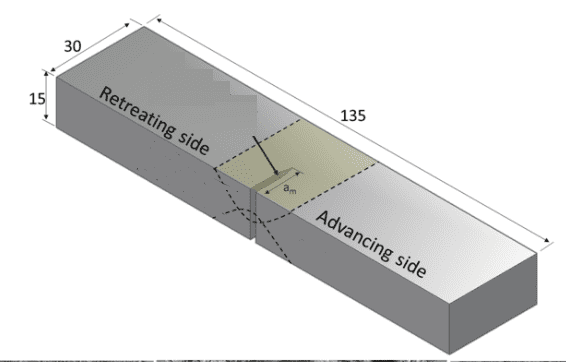
Importance of CTOD Test
This test is normally not specified in codes and specifications, but becomes a requirement for approving steels and welding consumables meant for critical structures such as offshore platforms to be erected in rough and cold seas.
Though Charpy test is being used as a guide and a quality control test for toughness, its limitations from the design point of view are being felt with the increasing use of new alloys for which previous experience is lacking.
The concept of linear fracture mechanics is now being applied to design problems to give fracture-safe structure containing a defect of known size.
This concept involves a study of stresses and strains at the tips of sharp cracks with respect to the applied loading.
Under elastic conditions, this stress field can be described in terms of a single parameter known as the stress intensity factor K.
The critical value of K which will cause the crack to grow under a static load is called Ke, which represents the fracture toughness of the material.
The presence of a tensile residual stress field combined with external loading modifies the stress intensity at crack tips which serve as an initiation point for crack propagation.
In weld fatigue lifetime, it is assumed that the effect of the mean stress applied during the loading cycle is less compared to large tensile stresses that may be present in the weld region.
Unlike the inexpensive 10mm by 10mm square Charpy-V Notch test piece with a sharp machined V notch, the Crack Tip Opening Displacement: CTOD specimen can be the full material thickness and will have a real crack.
The specimen is applied to a load that simulates the actual service condition of the part.
To have reliable and consistent result data, 3 test samples are tested at a given temperature and load. This minimizes the test error risks.
The CTOD test specimens are ‘proportional’ to each other in length, depth, and thickness. This ensures that each test sample is interrelated to others and irrespective of material thickness, every sample has equal proportions.
Due to the criticality of the application, the welded structure has to undergo a stringent toughness, crack tip opening displacement (CTOD) test where a small localized brittle zone in the entire weld can result in failure.
What is the Tensile test procedure, types of equipment and Lab report?
Charpy V Notch vs. CTOD
CVN test is the most commonly used type of toughness test. This is done by removing some small machined specimens from the specimens and impact breaking them at the minimum service temperature of the component.
The CVN test is a not very costly and simple test that provides qualitative values for the toughness test.
Material ductile-brittle transition temperature (Also called Nil ductility temperature or NDT) is the temperature where metal loses its toughness and is no more ductile.
This nil ductility temperature is very important when designing components for low operating temperatures and the CVN test is one of the main tests to verify that the material can withstand this Nil ductility temperature.
So What is the importance of this? The reason is that if a metal is used below the ductile-brittle transition temperature, it’s prone to have a brittle fracture. A brittle material exhibits no pre-warning before a failure and thus it can be a catastrophic and costly affair.
You can compare brittle fracture to breaking a glass by application of a load. Such failure mechanisms must be avoided for components’ integrity and reliability.
Comparing a CTOD test to CVN- the most important condition is the application of the load. In Charpy V-Notch Test the applied load is sudden to induce a material fracture.
While the application of the load in the Crack Tip Opening Displacement test is gradual loading that simulates the component operating conditions to induce a crack.
The result of CTOD can be a complete fracture or partial fracture. Another difference is the specimen size. CVN uses a standard specimen size of 10 mm X 10 mm X 55 mm while the CTOD test specimen represents actual material thickness.
Which Properties do we get from a CTOD test?
The main results of the CTOD test are the fracture load and the displacement (width) of the opening during crack propagation. This information helps to find the material toughness in a CTOD test.
CTOD results help designers to predict requirements for anticipated repairs required for a component in advance.
It is not always necessary that a minor crack requires immediate attention for repair but this could lead to crack propagation with time.
Thus predicting such cracks in advance and planning their repair in advance can save time and money along with operation loss. Performing a CTOD test and working on its results help to maintain equipment operation and integrity.
The various fracture toughness values in a CTOD may be simply defined as:
Depending on the material response, KIC or δ fracture toughness values may be determined from force (F) versus notch opening displacement (V) records of the test. Alternatively, or in addition, KIC or J fracture toughness values may be determined from F versus load point displacement (q) records.
